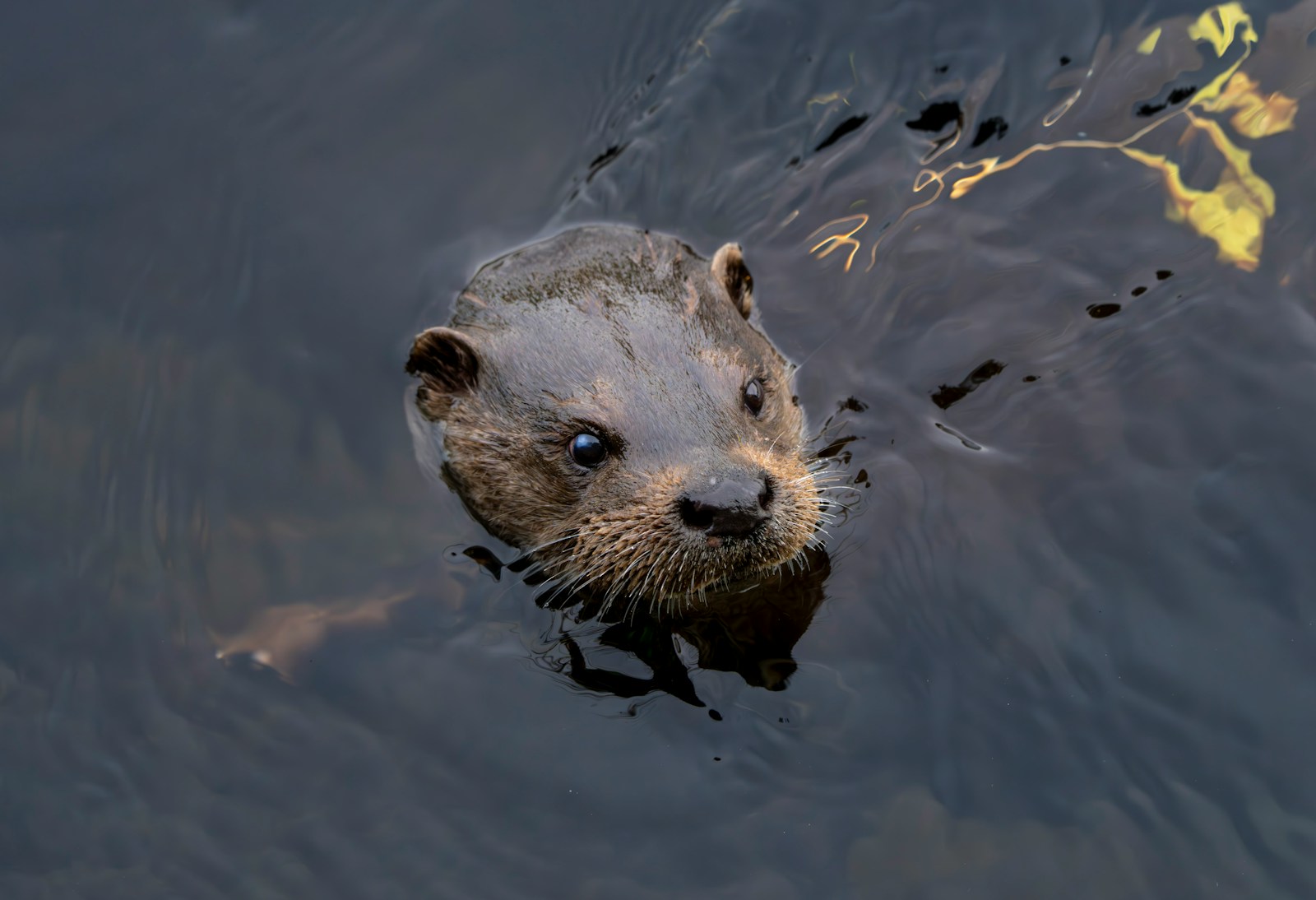The North American river otter, with its playful demeanor and ecological significance, once thrived throughout waterways across the United States. However, by the mid-20th century, these charismatic mammals had disappeared from many regions due to unregulated trapping, water pollution, and habitat destruction. Their absence left a noticeable gap in aquatic ecosystems, disrupting natural food chains and allowing certain prey species to proliferate unchecked. Beginning in the 1970s, wildlife biologists embarked on ambitious reintroduction programs to restore river otters to their former habitats. These initiatives represent one of America’s most successful wildlife restoration stories, combining scientific expertise, conservation partnerships, and public support to bring these aquatic mammals back to parks and waterways where they had been absent for generations.
The Disappearance of an Aquatic Icon
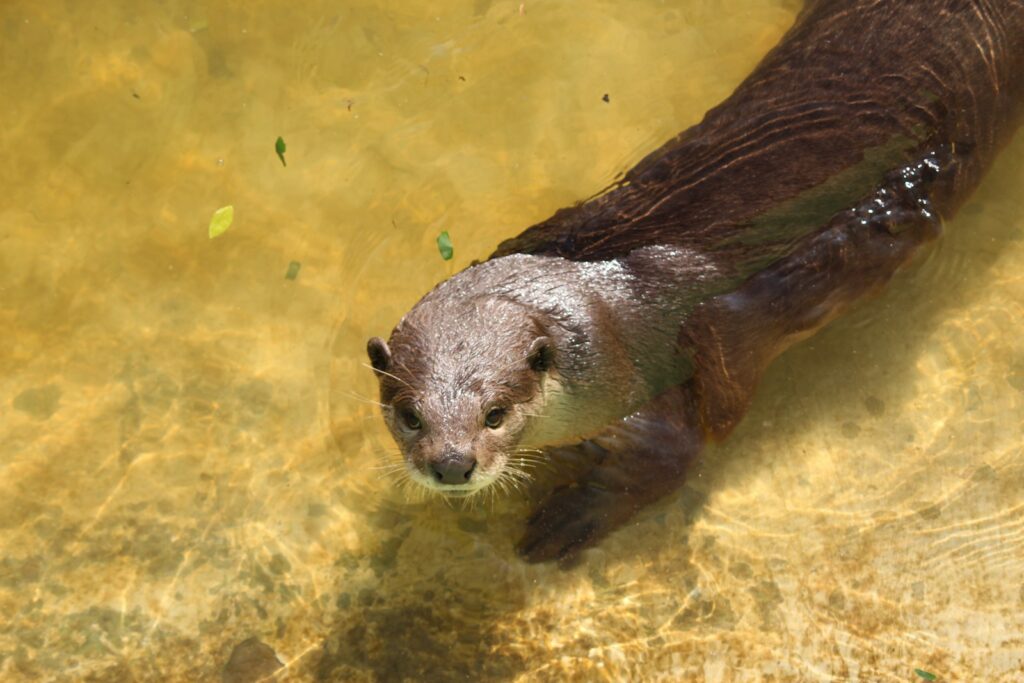
North American river otters (Lontra canadensis) once inhabited waterways across the continental United States, serving as apex predators in aquatic ecosystems. By the early 20th century, populations had declined dramatically due to the fur trade, with pelts fetching high prices and leading to intensive, unregulated trapping. Water pollution from industrial development, agricultural runoff, and untreated sewage further degraded otter habitat, making waterways uninhabitable even where hunting pressure had ceased. Additionally, widespread development along rivers and streams destroyed the riparian corridors otters relied upon for denning, travel, and protection. By the 1950s, river otters had been extirpated from 11 states and severely reduced in at least 9 others, representing a significant ecological loss across much of the American landscape.
Ecological Significance of River Otters
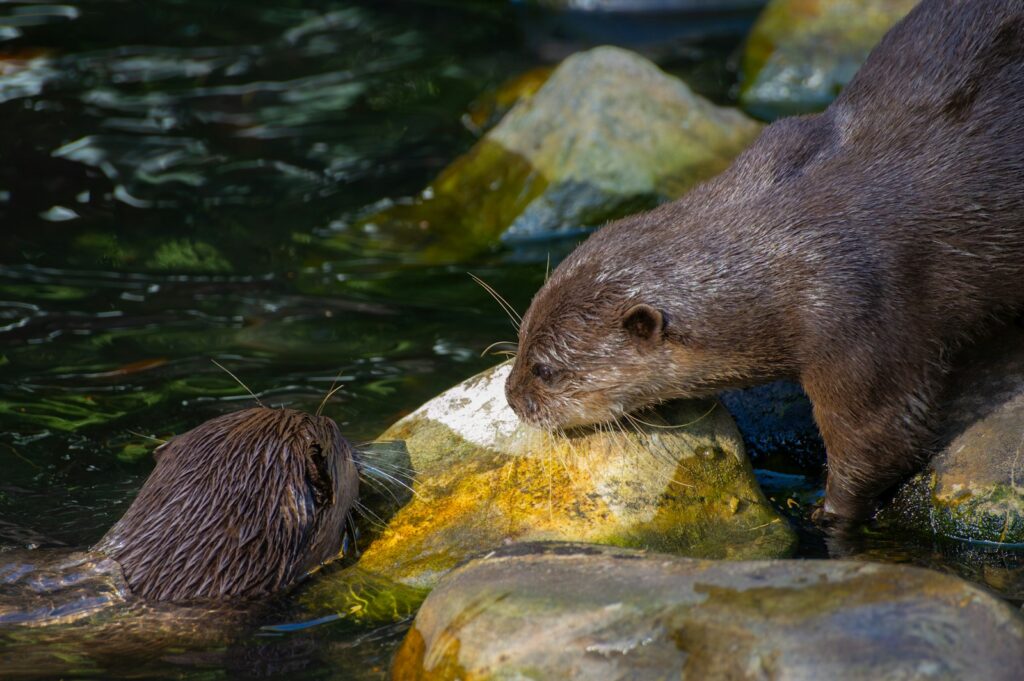
River otters serve as indicator species, their presence signaling healthy aquatic ecosystems with clean water and abundant food resources. As predators, they help regulate populations of fish, crayfish, amphibians, and aquatic invertebrates, preventing any single prey species from dominating the ecosystem. Their feeding behavior can increase aquatic biodiversity by preventing competitive exclusion among prey species. Beyond their ecological role, river otters create economic value through wildlife tourism, with their playful, visible behaviors making them popular attractions in parks where they’ve been successfully reestablished. Recognizing these multifaceted benefits, conservation biologists identified river otter reintroduction as a priority for ecosystem restoration in many regions.
Planning the Comeback: Early Reintroduction Efforts
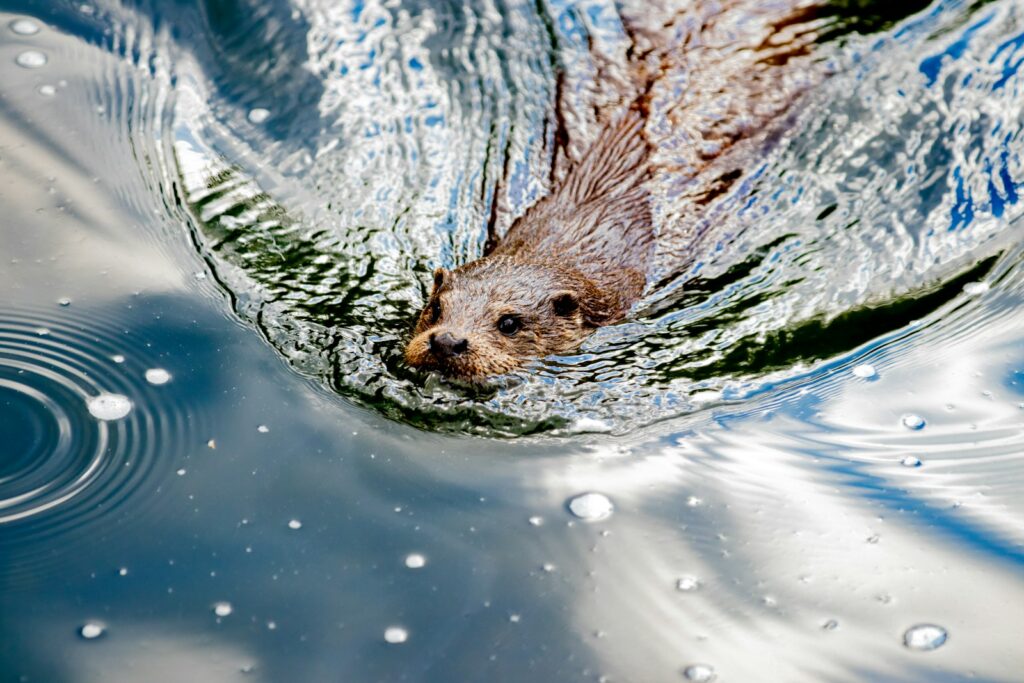
Colorado launched one of the first systematic river otter reintroduction programs in 1976, focusing initially on the upper Colorado River drainage. Missouri followed with its own program in 1982, developing protocols that would later influence reintroduction efforts across multiple states. These early initiatives required extensive habitat assessments to identify waterways with sufficient food resources, water quality, and suitable denning sites before any otters could be released. Biologists developed capture techniques for source populations, veterinary protocols for health assessments, and transportation methods that minimized stress on the animals. Perhaps most importantly, these pioneering efforts demonstrated that otters could successfully establish breeding populations when reintroduced to suitable habitat, providing a model for future restoration work.
Capturing Source Populations
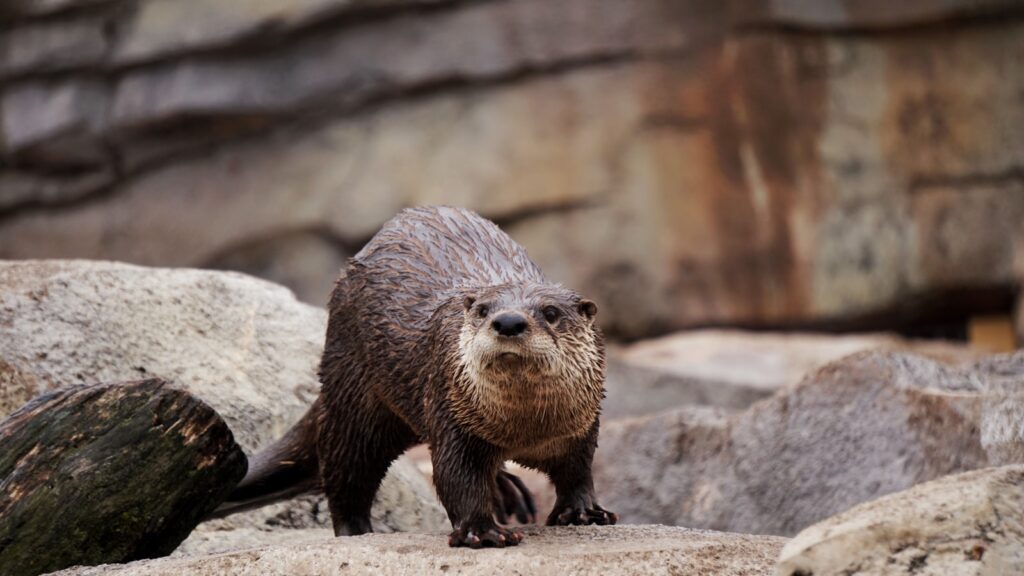
Biologists sourced river otters for reintroduction primarily from states with healthy populations, particularly Louisiana, which became the largest donor of otters for reintroduction programs nationwide. Capture methods evolved over time, with foothold traps modified with offset jaws and padding to prevent injuries becoming the preferred method for many programs. In some cases, biologists collaborated with licensed trappers who would contact wildlife officials when otters were caught, allowing the animals to be transferred to reintroduction programs rather than harvested for fur. Special handling protocols were developed, including custom transport containers that minimized stress during what could be lengthy journeys between capture sites and release locations. The logistical complexities of capturing wild otters required close coordination between wildlife agencies in different states, creating unprecedented interstate cooperation for wildlife restoration.
Health Assessments and Quarantine Procedures
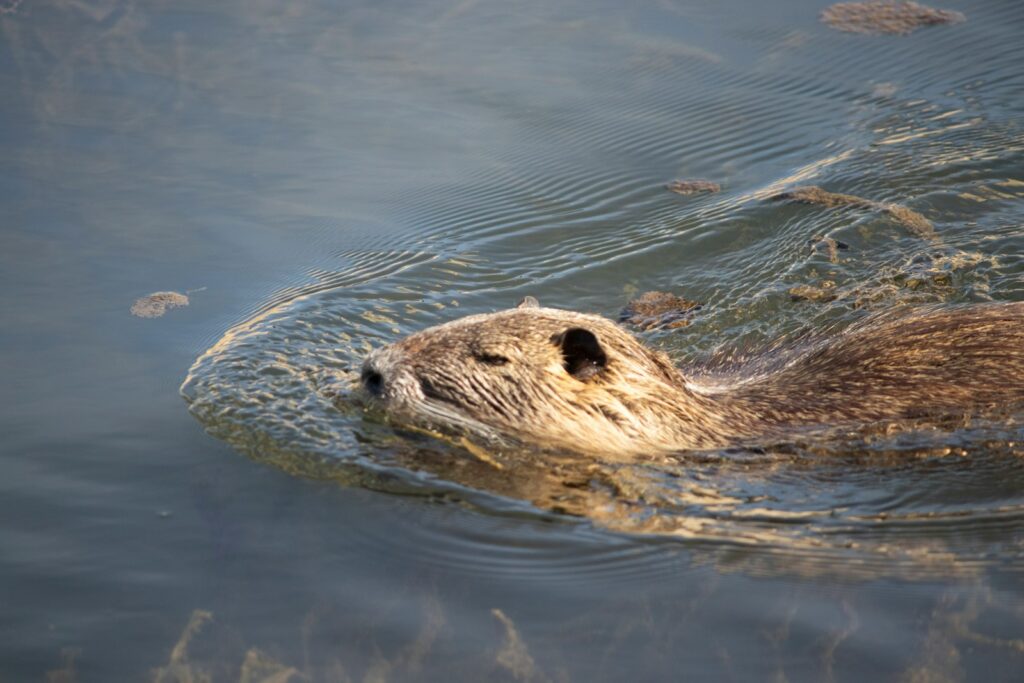
Each captured otter underwent comprehensive veterinary screening before being considered for release in a new location. These examinations included blood tests for diseases like canine distemper and parvovirus that could potentially devastate wild populations if introduced. Veterinarians assessed overall body condition, conducted dental examinations, and treated any parasites or injuries discovered during screening. Most reintroduction programs implemented quarantine periods ranging from two to six weeks, allowing time for health monitoring while the animals acclimated to temporary captivity. During quarantine, biologists collected valuable data on individual otters, including weight, approximate age, and genetic samples that would later contribute to our understanding of reintroduced population dynamics. These rigorous health protocols protected both the reintroduced otters and existing wildlife in release areas.
Release Site Selection Criteria
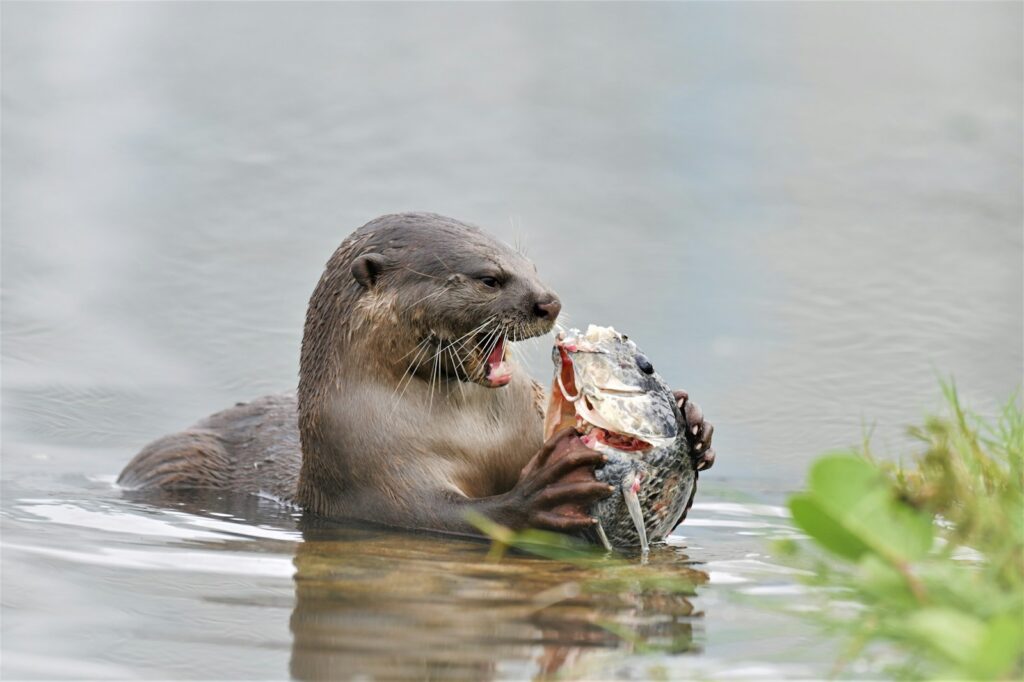
Selecting appropriate release sites proved crucial to reintroduction success, with biologists evaluating multiple habitat factors before finalizing locations. Water quality received primary consideration, as otters require clean water with minimal industrial pollutants, heavy metals, or pesticide contamination. Food availability was assessed through surveys of fish populations, crayfish abundance, and other potential prey items to ensure sufficient resources for establishing otter populations. Physical habitat features like undercut banks, beaver lodges, hollow logs, and dense riparian vegetation were documented as these provide essential denning and resting sites for otters. Additionally, biologists evaluated human activity patterns in potential release areas, preferring locations with minimal disturbance while still allowing for public wildlife viewing opportunities in appropriate park settings.
Hard Release vs. Soft Release Techniques
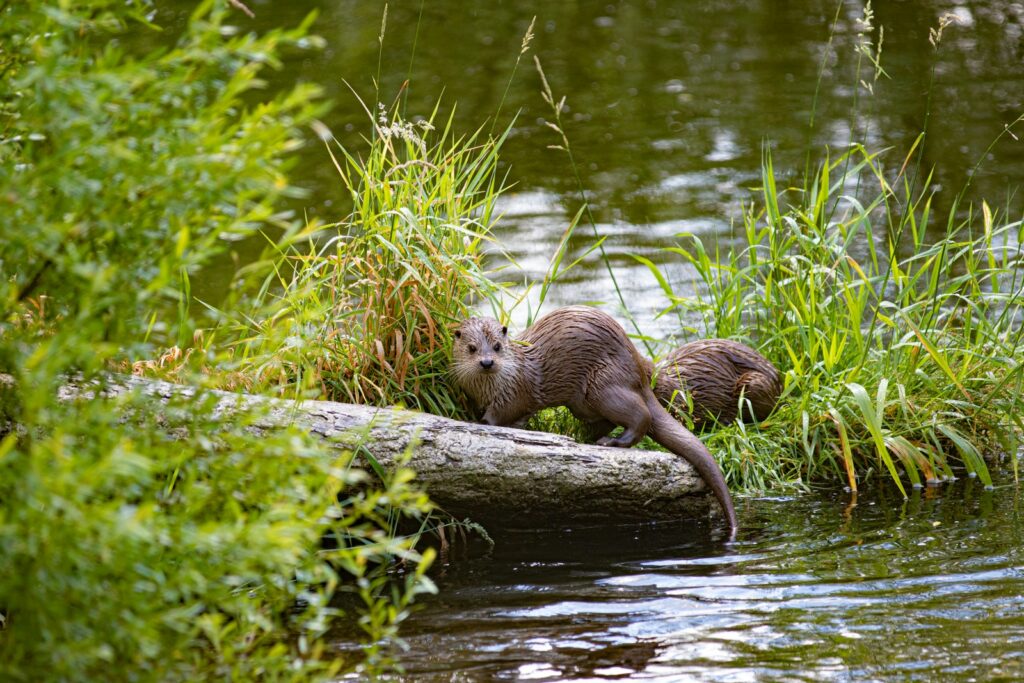
Reintroduction programs utilized two primary release strategies, each with distinct advantages depending on site conditions and program resources. Hard releases involved transporting otters directly to suitable habitat and immediately releasing them without acclimation periods, allowing the animals to select their own territories naturally. In contrast, soft release techniques incorporated temporary holding facilities at release sites, keeping otters in enclosures with access to natural water features for periods ranging from several days to two weeks before final release. Missouri’s pioneering program found success with hard releases, while Pennsylvania implemented extensive soft release protocols with specially designed stream-side enclosures. Over time, most programs adopted modified approaches combining elements of both techniques, such as brief acclimation periods in transport crates at release sites before allowing otters to enter their new environments.
Tracking and Monitoring Reintroduced Populations
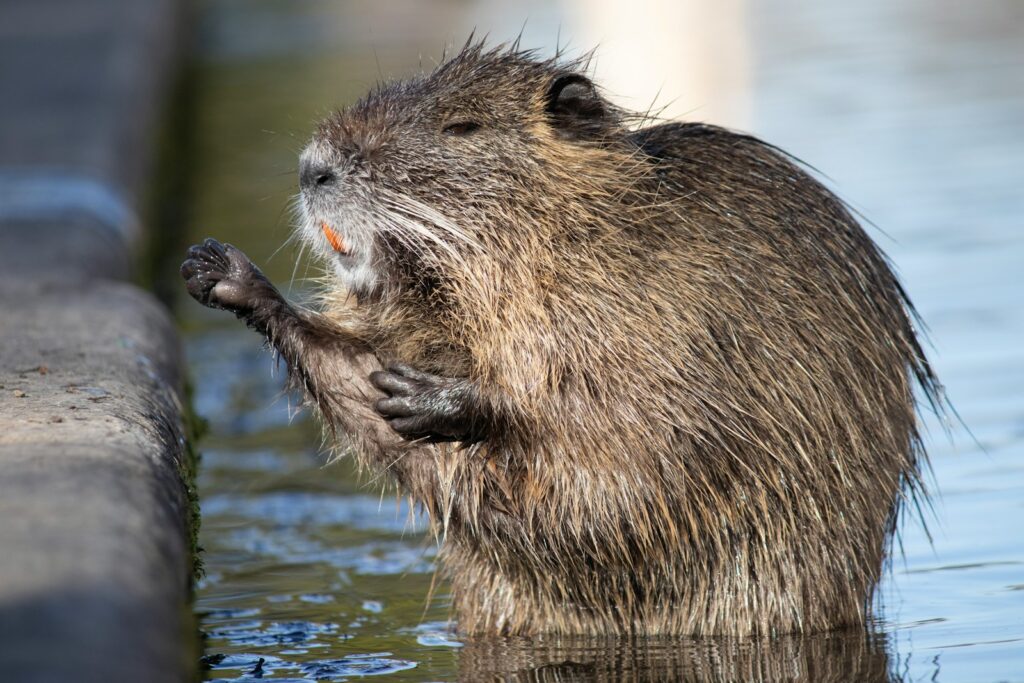
Biologists employed various methods to monitor otter movements and survival after release, with radio telemetry serving as the primary tracking tool in most programs. Surgically implanted transmitters, preferred over external attachments that could impede swimming, allowed researchers to locate otters for up to two years post-release. Winter track surveys became essential monitoring tools, with biologists and trained volunteers searching for distinctive otter tracks, slides, and scat along waterways following snowfalls. Public reporting systems were established, encouraging park visitors and local residents to document otter sightings through dedicated hotlines or online forms. These multi-faceted monitoring approaches generated crucial data on dispersal patterns, habitat preferences, survival rates, and reproductive success, allowing biologists to adapt management strategies based on documented outcomes.
Pennsylvania’s Model Program
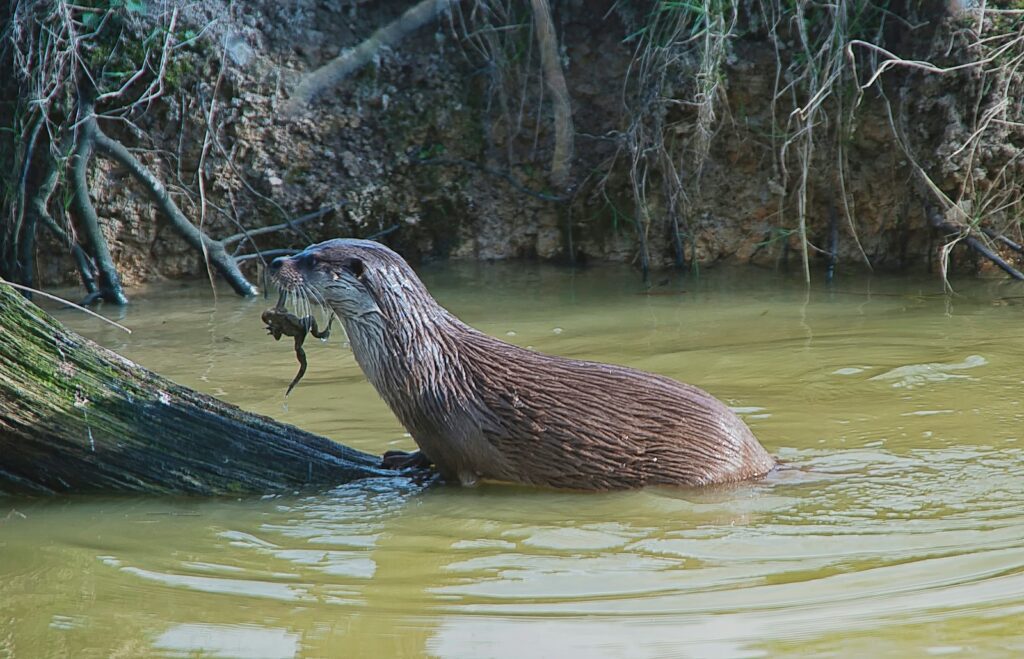
Pennsylvania conducted what many consider the model river otter reintroduction effort, releasing 153 otters across seven watersheds between 1982 and 2004. The program’s comprehensive approach included extensive pre-release habitat assessments, soft release protocols, and long-term monitoring that continued for over a decade after the final releases. Pennsylvania’s biologists documented high survival rates among released otters, with some individuals dispersing over 40 miles from release sites to establish new territories. Within five years of the initial releases, researchers confirmed successful reproduction, documenting multiple litters born to reintroduced females. By 2006, the program had achieved such success that Pennsylvania opened a limited trapping season in northwestern counties, demonstrating the population’s recovery to harvestable levels. The Pennsylvania model has been extensively studied and replicated by other states launching their own reintroduction efforts.
Great Smoky Mountains National Park Success Story

Great Smoky Mountains National Park initiated river otter reintroduction in 1986, releasing 137 otters over an eight-year period in one of the most visible park-based restoration efforts. The program captured public attention through educational initiatives that explained the otters’ ecological role and invited visitors to participate in “otter watches” at release sites. Park biologists documented the otters’ rapid expansion throughout the park’s waterways, with populations establishing in both Tennessee and North Carolina sections. Visitor sightings became increasingly common along popular waterways like Abrams Creek and the Oconaluftee River, creating wildlife viewing opportunities that enhanced the park experience. The successful reestablishment of otters in this iconic national park demonstrated how wildlife restoration could serve both ecological and recreational objectives in protected landscapes.
Challenges and Adaptations
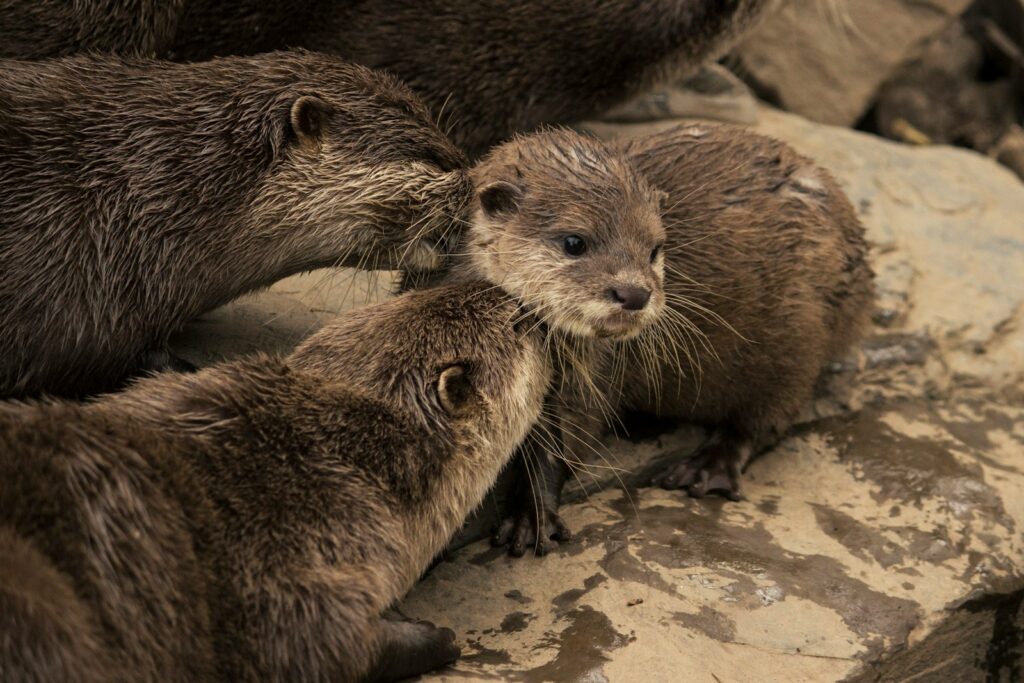
Despite overall success, otter reintroduction efforts faced numerous challenges requiring adaptive management approaches. Post-release mortality occurred in some programs due to factors including vehicle collisions, territorial conflicts, and occasional predation by coyotes or bobcats. Some release sites experienced temporary food resource depletion as newly introduced otters heavily harvested easily accessible prey before achieving population equilibrium. Public acceptance varied by region, with some anglers initially expressing concerns about potential impacts on game fish populations, requiring educational outreach to address misconceptions. Programs also faced logistical and funding constraints, with the cost per relocated otter often exceeding $1,000 when accounting for capture, veterinary care, transportation, and monitoring expenses. Biologists responded to these challenges by adjusting release strategies, enhancing public communication efforts, and developing partnerships with conservation organizations to supplement government funding.
Nationwide Restoration Success
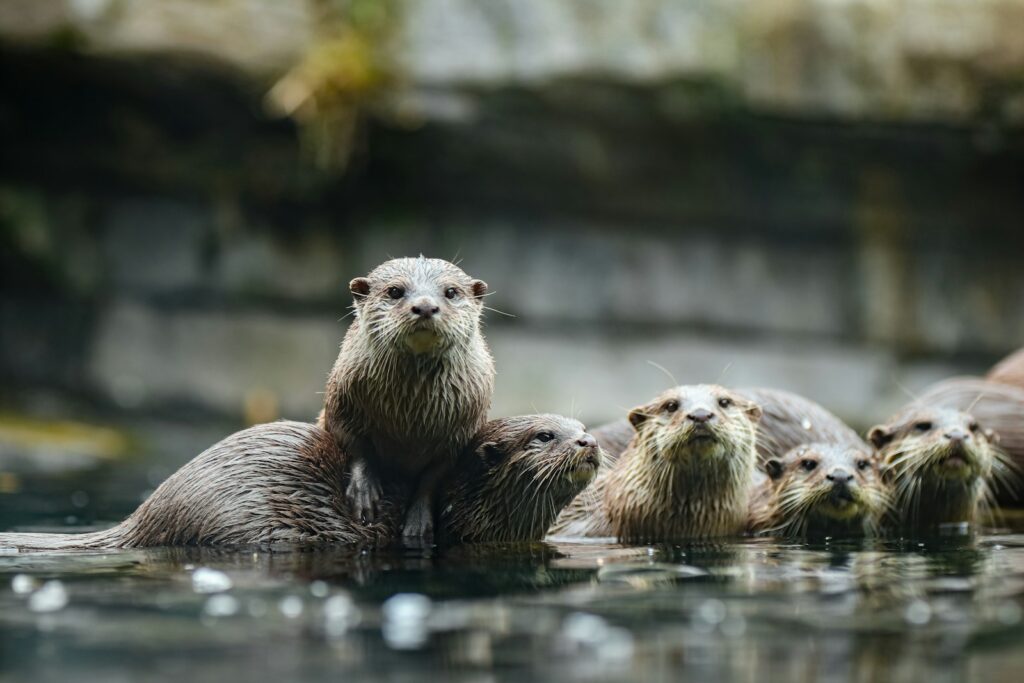
By 2022, river otter reintroduction programs had successfully restored populations to all 11 states where they had been completely extirpated, representing one of North America’s most comprehensive wildlife recovery efforts. Approximately 4,300 otters were relocated during the height of reintroduction activities between 1976 and 2012, establishing founder populations that have since expanded through natural reproduction. States including Ohio, Illinois, Kentucky, Indiana, and Iowa have documented otter population growth rates exceeding expectations, with many areas now supporting self-sustaining populations requiring minimal management intervention. Range expansion continues naturally, with descendants of reintroduced otters dispersing into neighboring watersheds and states, creating genetic connectivity between previously isolated populations. The cumulative success of these programs has removed river otters from endangered and threatened species lists in most states where they were previously imperiled.
Ecological and Public Benefits
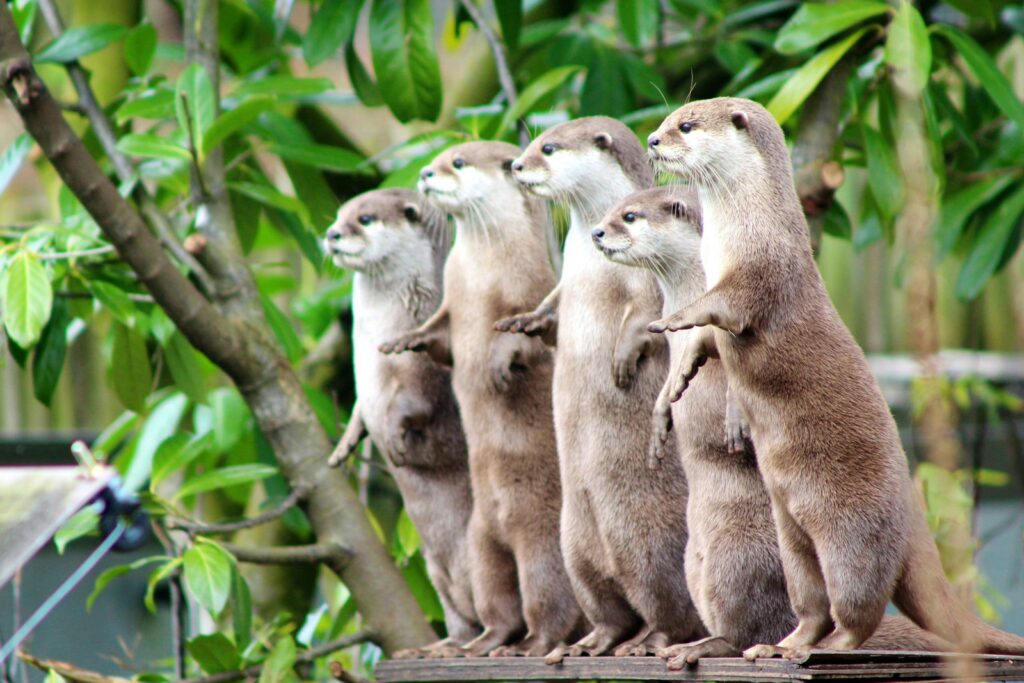
The return of river otters to U.S. parks and waterways has yielded measurable ecological benefits throughout aquatic systems. Research has documented increased biodiversity in watersheds where otters have been reestablished, with more balanced prey communities and improved ecosystem functioning. The presence of these aquatic predators has created trophic cascades that benefit overall water quality and riparian health. From a public perspective, river otters have become charismatic ambassadors for aquatic conservation, with their playful behaviors and high visibility making them popular attractions in parks nationwide. Educational programs centered around otter reintroductions have increased public understanding of watershed ecology and support for broader conservation initiatives. Additionally, the economic benefits of wildlife tourism associated with otter viewing opportunities have provided tangible value to communities near successful reintroduction sites.
Future Directions in Otter Conservation
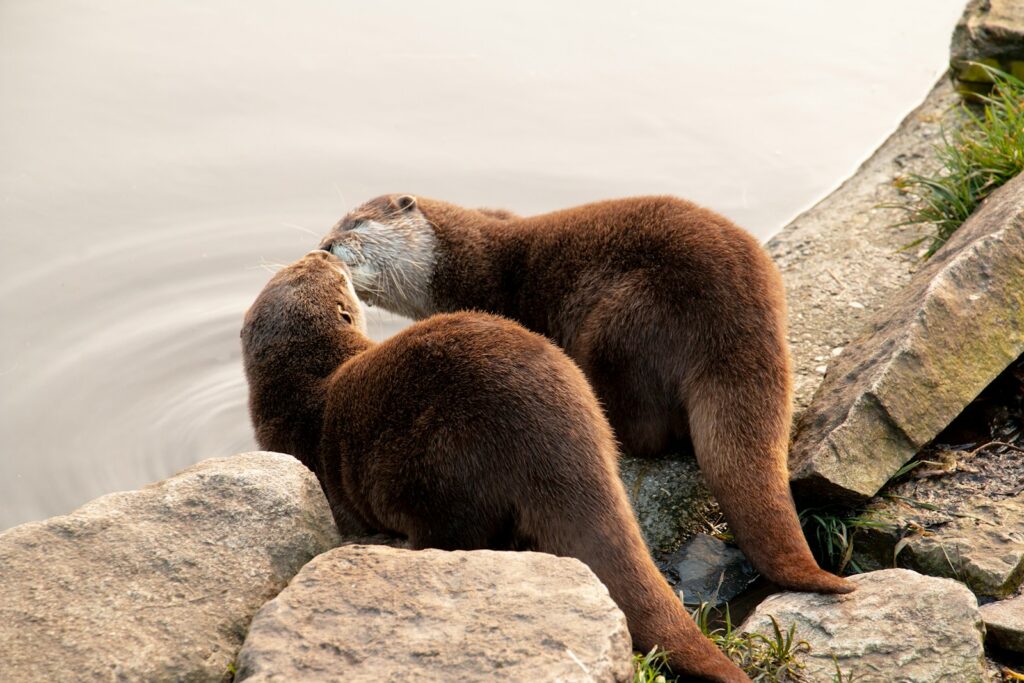
While reintroduction programs have largely achieved their initial goals, otter conservation now focuses on habitat protection, connectivity, and ongoing monitoring to ensure long-term population viability. Current research emphasizes genetic diversity assessment, using DNA collected during initial reintroductions to compare with contemporary populations and evaluate genetic health. Climate change presents emerging challenges, particularly through altered flow regimes and potential impacts on prey availability in some watersheds. Conservation biologists are developing predictive models to identify watersheds that may become unsuitable for otters under various climate scenarios. Citizen science initiatives increasingly supplement professional monitoring, with trained volunteers conducting standardized surveys that expand data collection beyond what agency resources alone could support. These evolving approaches aim to secure the river otter’s future in U.S. parks and waterways for generations to come.
The reintroduction of river otters to U.S. parks and waterways represents one of wildlife conservation’s most compelling success stories. From near-extinction in many regions to thriving populations today, these charismatic mammals demonstrate how scientific knowledge, agency cooperation, and public support can reverse decades of decline. The ecological benefits of their return extend throughout aquatic systems, while their playful antics create memorable wildlife viewing experiences for park visitors nationwide. As river otters continue to expand their reclaimed range, they serve as living proof that with dedication and expertise, we can restore vital components of America’s natural heritage. Their comeback story offers hope and lessons for current and future wildlife restoration efforts across the country and beyond.

